Search
All search results for " Autonomous Audi TTS "
(28)
 Massimo Frascella - Biography
Massimo Frascella - Biography
His journey began at the Instituto d’Arte Applicata & Design in Turin, where he cultivated his talent and passion for automotive design. After graduating, he began his career at the legendary Stile Bertone, an Italian design studio known for creating concepts and vehicles for global automotive brands, leaving a significant mark on automotive history. During this time Frascella learned the fundamental craft of automotive design. He was later recruited to work at Ford Motor Company in the UK and his quest for new challenges took him to Lincoln/Mercury and afterwards Kia in California, USA. In 2011, Frascella joined Jaguar Land Rover, where he has held leading positions and most recently was the Head of Design for both historic brands. He was responsible for shaping the new design of the iconic Land Rover Defender and more recently the new Range Rover and Range Rover Sport models. As of June 1st, 2024 he took on the role of Chief Creative Officer at AUDI AG. In his position as creative director for brand creative design, he is responsible for the holistic design of every customer touchpoint with the Audi brand. Furthermore, he oversees all aspects of the automotive design such as Exterior, Interior, Colour & Materials, User Interface and User Experience design, Motorsport vehicles and Design Strategy. The design philosophy of Frascella is rooted in simplicity, sophistication and clarity – values he aims to incorporate into every aspect of Audi’s touchpoints to strengthen the brand through a consistent look & feel in all manifestations. Together with Frascella the Audi Design team stand for carving out design as the emotional force that can inspire, connect and drive change, and to cultivate and promote creativity as the beating heart of the brand.
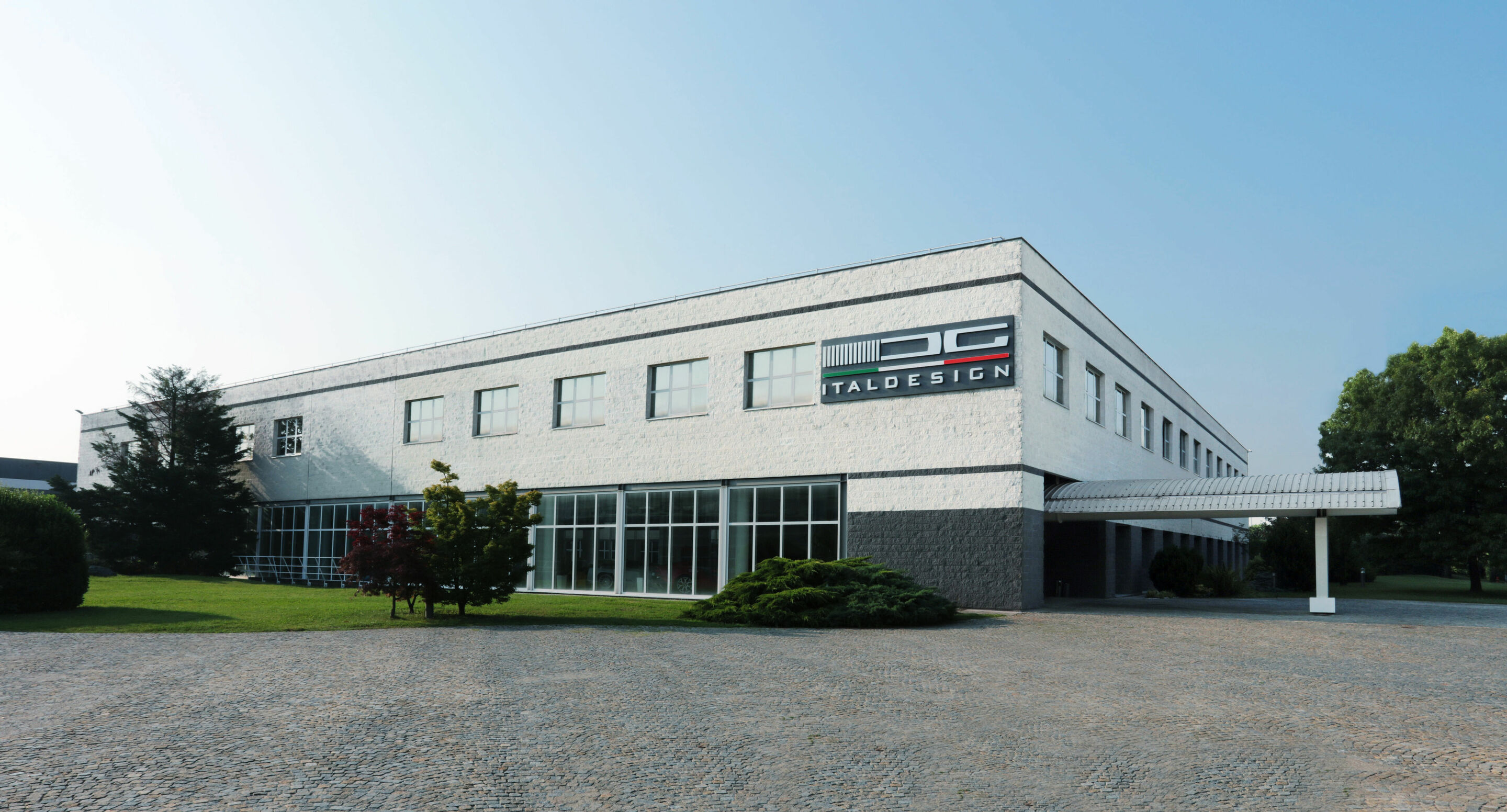 Italdesign S.p.A.
Italdesign S.p.A.
Italdesign has operated as a service company for the automotive industry since 1968. From the beginning, the company specialized in design, engineering, prototyping, and ultra-limited series production, serving both traditional original equipment manufacturers (OEMs) and newcomers to the mobility sector at a global scale. Italdesign is part of the Audi family alongside Lamborghini, Ducati, and Bentley.
Italdesign: More than five decades at the forefront
Antonio Casu
Chief Executive Officer of Italdesign S.p.A.
The Italdesign press portal offers further
Read more
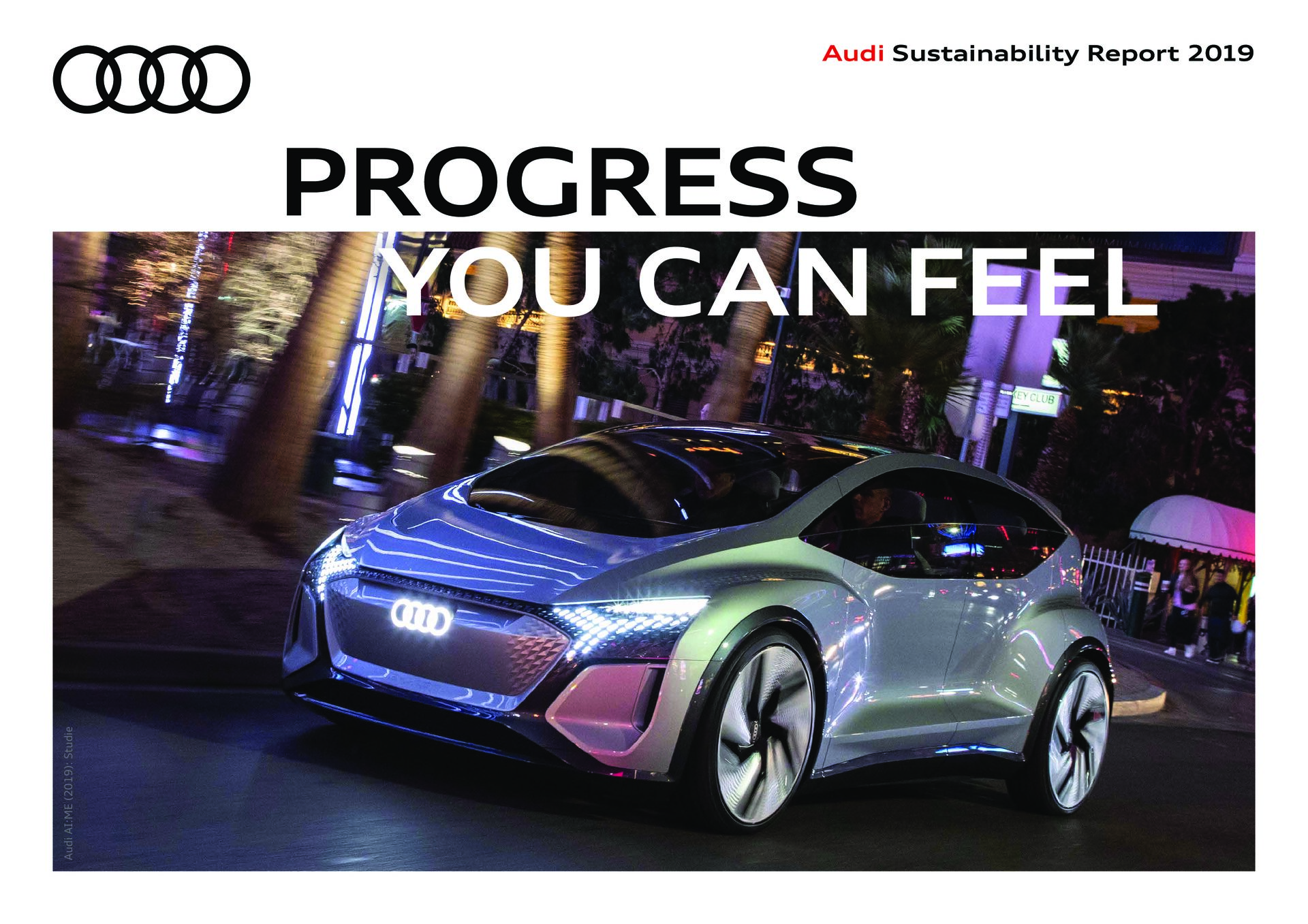 Audi Sustainability Report 2019
Audi Sustainability Report 2019
Internationalization is quickly becoming evident here. https://www.audi.com/en/experience-audi/models-and-technology/digital-services/audi-connect.html https://www.audi.com/en/experience-audi/models-and-technology/digital-services/audi-connect.html https://www.audi.de/de/brand/de/kundenbereich/connect/audi-connect-pakete-und-funktionen.html#nm-anchor-1496391888 https://www.audi-mediacenter.com/de/audimediatv/video/audi-connect-ampelinfo-online-2543 https://www.audi.de/de/brand/de/kundenbereich/connect/audi-connect-pakete-und-funktionen.html#nm-anchor2126103159 STRATEGY 53 EMPLOYEES & SOCIETYFOREWORD APPENDIXBRIEF PORTRAIT OPERATIONS & INTEGRITY PRODUCTS & SERVICES VALUE CREATION & PRODUCTION Audi Sustainability Report 2019 Progress you can feel 28 32 30 28 27 24 18 17 1464 82 98 94 88 84 77 75 75 74 72 Lä n d er - ü b er g re if en d C h in a S ü d ko re a It al ie n S p an ie n D eu ts ch la n d Fr an kr ei ch Ja p an U S A V er ei n ig te s K ö n ig re ic h Are you ready to let go? that intends to be proactive and informed in contributing to a better world,” says Floridi. After all, autonomous driving is the subject of many highly charged debates. Getting into a car that takes passengers to their destination on its own? Some people are frightened of this idea, while to others it sounds like the ultimate vision of free mobility. But one thing is certain: Audi has been working on autonomous vehicle technology for many years. The Audi AI:ME and Audi AI:CON illustrate impressively how this could work and what it could look like in the future. They belong to the family of concept cars that began in 2017. Each of the visionary Audi is a driving force in the field of driver assistance systems – but what do most people think about technological leaps in automated driving? A study from Audi provides clarity. Are you worried when the pilot switches on the autopilot in a plane?
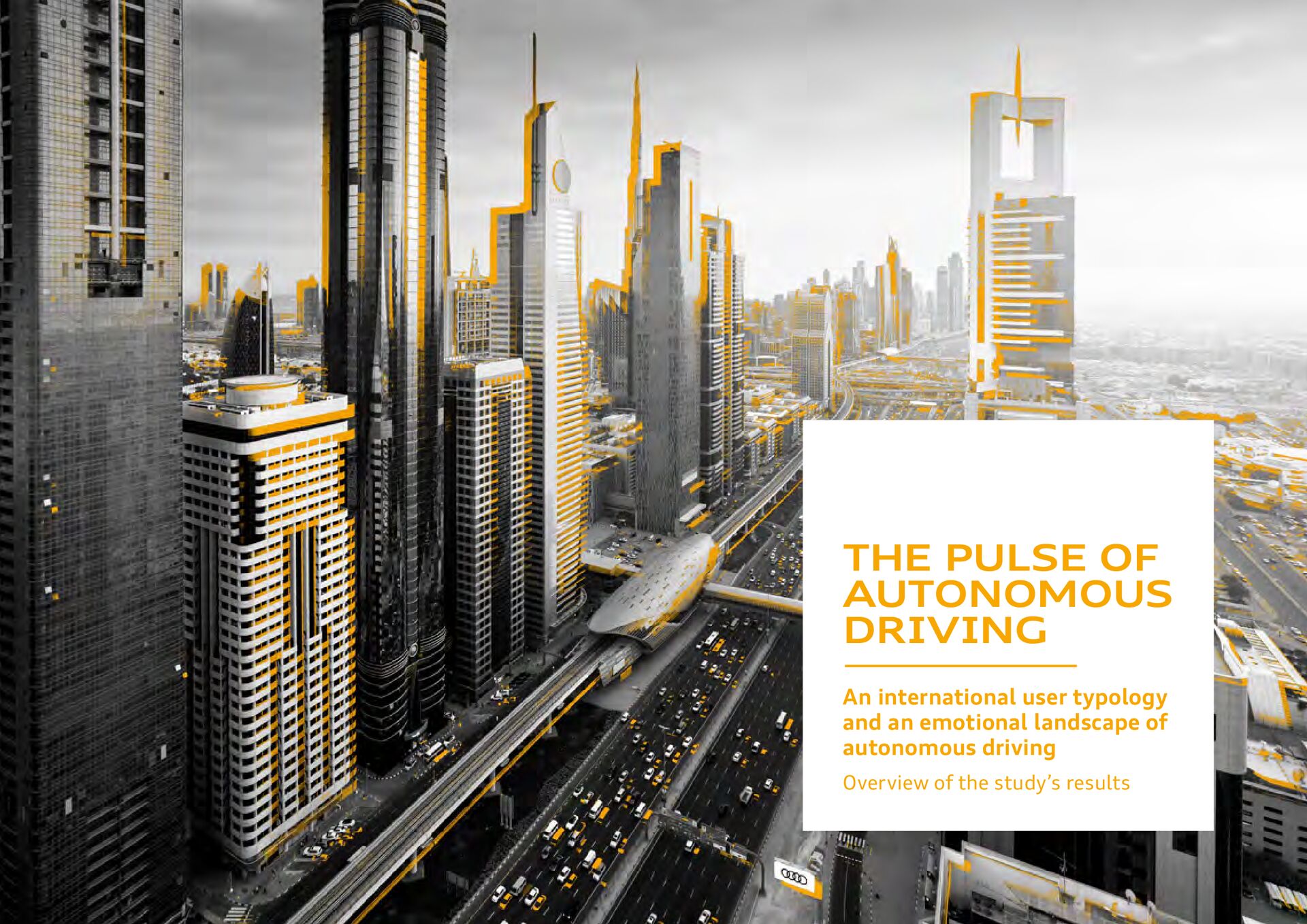 The Pulse of Autonomous Driving – short version
The Pulse of Autonomous Driving – short version
From the suspicious driver to the tech-savvy passenger: in the representative online study “The Pulse of Autonomous Driving”, Audi has produced a user typology of autonomous driving. In the context of the initiative “&Audi”, the mobility company Audi in cooperation with the market research institute Ipsos interviewed 21,000 people in nine countries on three continents. Chinese and young, well-educated people are euphoric. There is room for improvement in knowledge about autonomous driving.
THE PULSE OF AUTONOMOUS DRIVING An international user typology and an emotional landscape of autonomous driving Overview of the study’s results 2 Mobility is an essential part of life in many societies. Every day, all over the world, cars play key functions (e.g., in transport or leisure) and social roles (e.g., as statements or status symbols). They are part of our history and culture. Any transformation of mobility affects the very essence of contemporary societies. And it is hard to imagine a more profound transformation of mobility than autonomous driving. So, understanding attitudes towards its benefits and shortcomings means being able to address societal welfare and individual wellbeing more successfully. Hence, this study is more than just a welcome addition to our knowledge of the phenomenon; it is a necessary step for any policy- and law-making decision, as well R&D and business strategy, that intends to be proactive and informed in delivering a better world. The survey contains a wealth of information and insights about people’s attitudes to autonomous driving in China, France, Germany, Italy, Japan, South Korea, Spain, United Kingdom, and United States. For example, structuring the responses into 5 typologies of drivers is helpful to understand overall attitudes. Here, I would like to outline two interesting points emerging from the study and draw a general conclusion. Consider the tension between technological novelty and change.
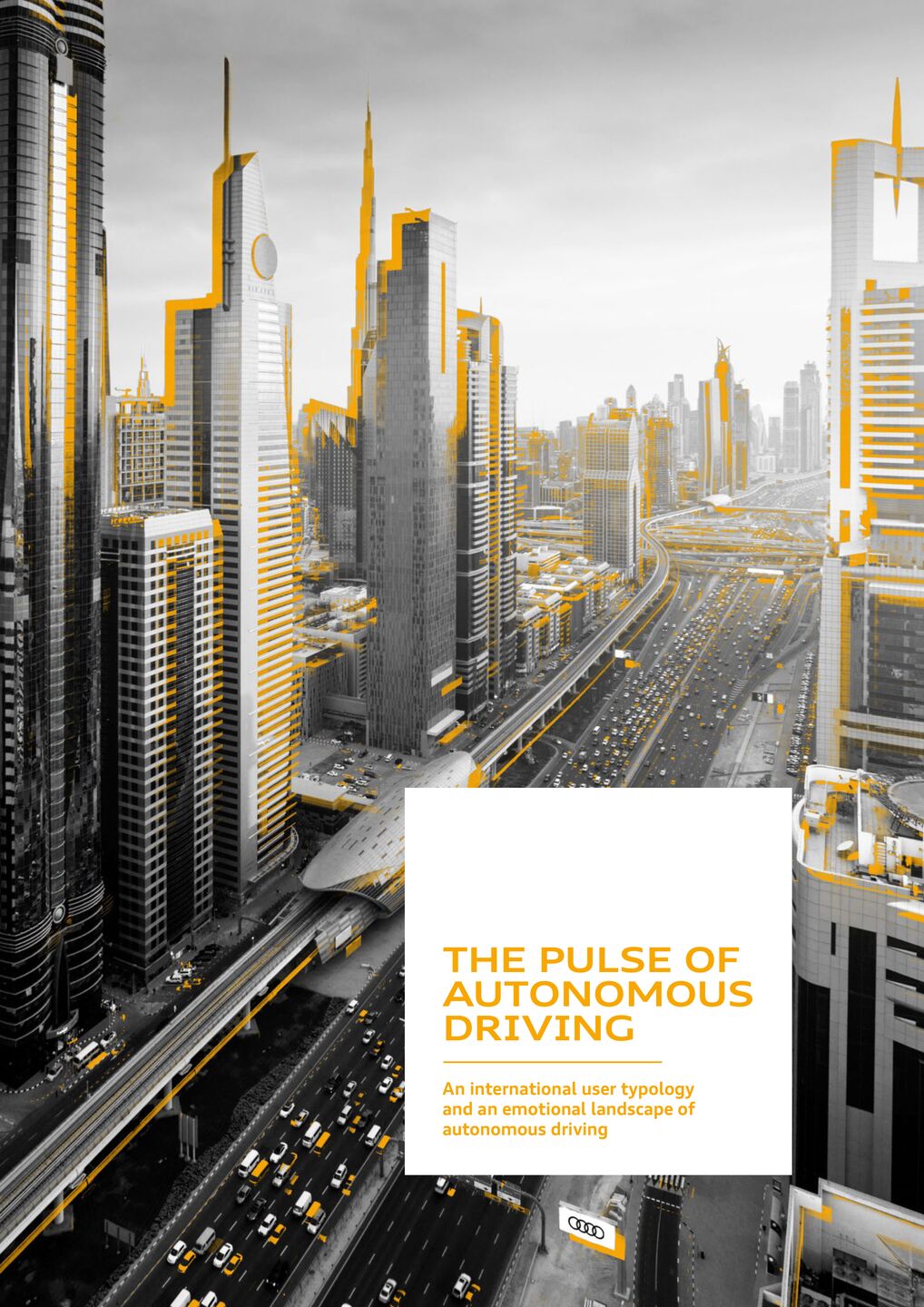 The Pulse of Autonomous Driving – long version
The Pulse of Autonomous Driving – long version
From the suspicious driver to the tech-savvy passenger: in the representative online study “The Pulse of Autonomous Driving”, Audi has produced a user typology of autonomous driving. In the context of the initiative “&Audi”, the mobility company Audi in cooperation with the market research institute Ipsos interviewed 21,000 people in nine countries on three continents. Chinese and young, well-educated people are euphoric. There is room for improvement in knowledge about autonomous driving.
THE PULSE OF AUTONOMOUS DRIVING An international user typology and an emotional landscape of autonomous driving CONTENTS Foreword by Dr. Luciano Floridi 04 Executive Summary 06 Methodology 08 HUMAN READINESS INDEX 11 EMOTIONAL LANDSCAPE 15 USER TYPOLOGY 31 CONCLUSION 45 49 Imprint 51 Initiative &Audi FOREWORD Mobility is an essential part of life in many societies. Every day, all over the world, cars play key functions (e.g., in transport or leisure) and social roles (e.g., as statements or status symbols). They are part of our history and culture. Any transformation of mobility affects the very essence of contemporary societies. And it is hard to imagine a more profound transformation of mobility than autonomous driving. So, understanding attitudes towards its benefits and shortcomings means being able to address societal welfare and individual wellbeing more successfully. Hence, this study is more than just a welcome addition to our knowledge of the phenomenon; it is a necessary step for any policy- and law-making decision, as well R&D and business strategy, that intends to be proactive and informed in delivering a better world. The survey contains a wealth of information and insights about people’s attitudes to autonomous driving in China, France, Germany, Italy, Japan, South Korea, Spain, United Kingdom, and United States. For example, structuring the responses into 5 typologies of drivers is helpful to understand overall attitudes.
 Dynamic performance where the sky’s the limit – The Audi RS 5 Cabriolet
Dynamic performance where the sky’s the limit – The Audi RS 5 Cabriolet
The split rear seatbacks can be folded over individually, and a load-through hatch from the trunk to the rear seating area improves variability. Special reinforcements contribute to the convertible body’s high rigidity, and aluminum front fenders compensate for some of the added weight of the reinforcements. Elegant LED light strips illuminate in the taillights, which operate without any conventional incandescent lamps. Like the lights, the rear bumper was also redesigned; its diffuser is now much higher, and a honeycomb screen insert encloses the two large elliptical tailpipes of the exhaust system. On the trunk lid there is a subtle matt carbon spoiler lip for more downforce; it may be painted in the exterior color as an option. The Audi RS 5 Cabriolet measures 4,649 millimeters (15.25 ft) long, 1,860 millimeters (6.10 ft) wide and 1,380 millimeters (4.53 ft) high, and its wheelbase is 2,751 millimeters (9.03 ft). Eight exterior colors are available – a monochrome color, four metallic and pearl effect colors and three crystal effect paints. The soft top is available in black, gray, red or brown. As options, Audi can install a styling package in matt aluminum as well as an engine compartment design package that uses carbon fiber-reinforced polymer (CFRP) materials. The car’s drag coefficient is 0.34; underbody panels make a significant contribution towards aerodynamic refinement. Interior A typical RS 5 highlight is its three-spoke steering wheel with flat-bottomed rim that is trimmed in perforated leather. The multifunction keys are intuitive, as are all other controls in the RS 5 Cabriolet. The terminal of the optional MMI navigation plus system, for example, only requires six permanent keys for the main menus, and just a single button control suffices for Audi drive select. White numerals on black dials provide a strong contrast and are easy to read.
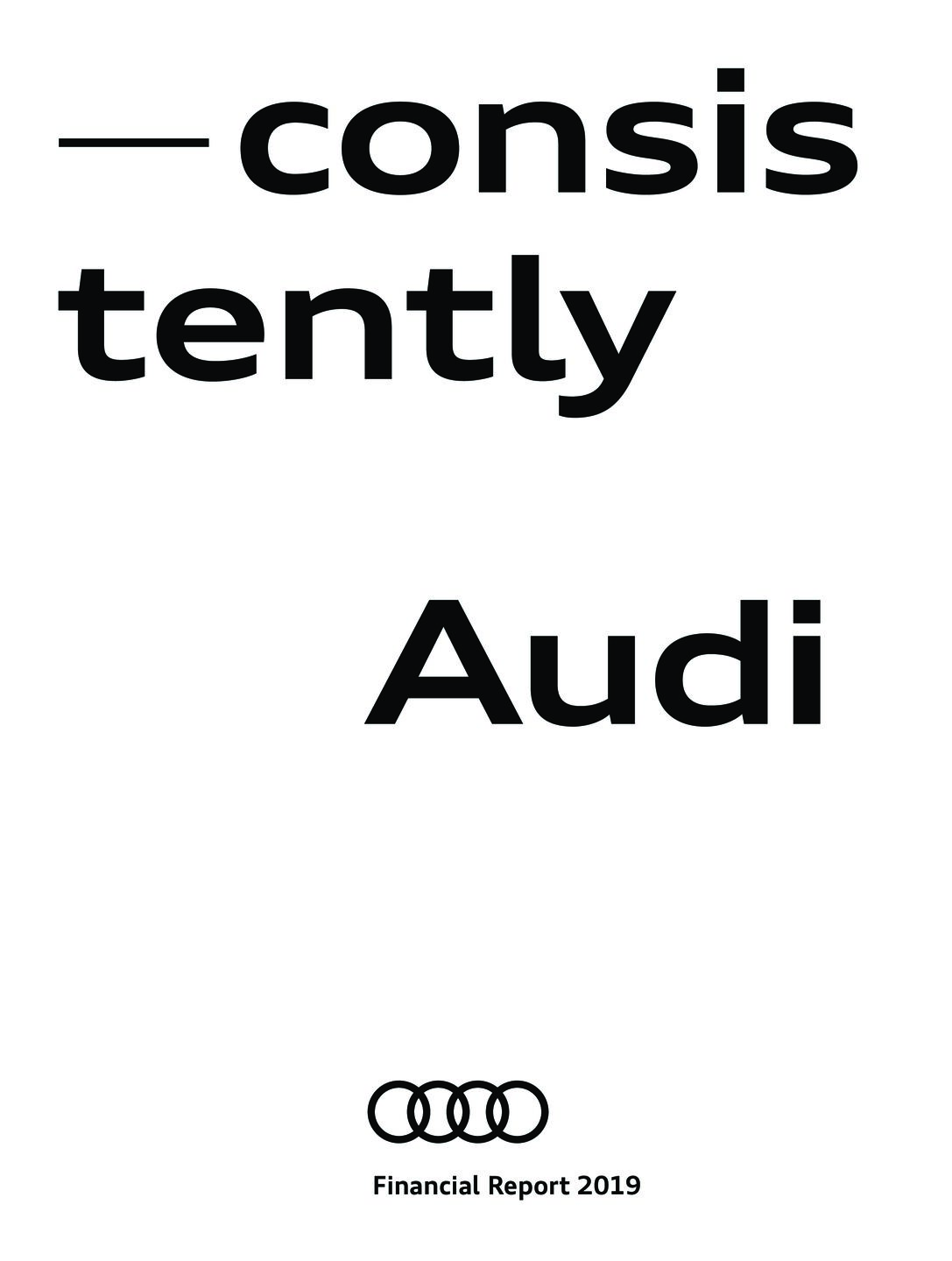 Financial Report 2019
Financial Report 2019
PRODUCTION // ECONOMIC REPORT 0 2 7 PRODUCTION / AUTOMOTIVE SEGMENT 1) Car production by model 2019 2018 Audi A1 – 8,750 Audi A1 Sportback 81,287 71,637 Audi Q2 2) 130,207 108,454 Audi A3 Sportback 128,788 171,729 Audi A3 Sedan 104,719 123,647 Audi A3 Cabriolet 7,302 9,571 Audi Q3 180,247 167,730 Audi Q3 Sportback 15,392 70 Audi TT Coupé 11,791 8,756 Audi TT Roadster 3,208 3,362 Audi A4 Sedan 228,113 244,484 Audi A4 Avant 85,790 86,548 Audi A4 allroad quattro 9,484 13,591 Audi A5 Sportback 71,128 80,162 Audi A5 Coupé 12,093 18,753 Audi A5 Cabriolet 9,856 12,629 Audi Q5 286,365 298,793 Audi A6 Sedan 176,362 195,270 Audi A6 Avant 50,677 51,990 Audi A6 allroad quattro 5,566 7,588 Audi A7 Sportback 17,068 20,058 Audi e-tron 43,185 2,404 Audi e-tron Sportback 191 21 Audi Q7 63,753 110,099 Audi Q8 44,890 22,414 Audi A8 23,826 24,541 Audi R8 Coupé 1,439 1,224 Audi R8 Spyder 682 540 Audi brand 1,793,409 1,864,815 Lamborghini Urus 5,233 2,565 Lamborghini Huracán 2,426 2,790 Lamborghini Aventador 1,005 1,216 Lamborghini brand 8,664 6,571 Automotive segment 1,802,073 1,871,386 2) This includes 2,867 (–) fully electric Audi Q2 L e-tron models built by the associated company FAW-Volkswagen Automotive Company, Ltd., Changchun (China), for the Chinese market. // AUDI BRAND In the 2019 fiscal year, we produced 1,793,409 (1,864,815) premium cars of the Audi brand. We adjusted production at our sites to reflect especially the worldwide fall in market demand, optimized stock levels and the large number of model changeovers. We produced 441,608 (491,262) vehicles at our Group headquarters in Ingolstadt. In Neckarsulm we manufactured 177,209 (186,196) Audi models. From January through December 2019, we built 156,995 (173,734) of the Audi Q5 at our production site at Audi México S.A. de C.V. in San José Chiapa (Mexico). Over the same period, Audi Hungaria Zrt. manufactured a total of 164,817 (100,000) cars at the Győr site (Hungary).
 The Audi A2 concept
The Audi A2 concept
With the A2 concept technology study, Audi is offering a peek at electric driving in the megacities of the future. The purely electric powered A2 concept is a classic space concept: a premium vehicle for metropolitan areas featuring generous amounts of space and composed road manners.
Audi A2 concept and Audi urban concept
The technology study is packed full with attractive, intelligent technologies. An innovative body technology – a further development of Audi’s ultra-lightweight construction – limits its weight to just 1,150 kilograms (2,535.32 lb). Audi connect technologies provide an Internet connection; the steering and brakes are purely electric (by-wire) systems. Exterior design The Audi A2 concept demonstrates the complete skill set of the Audi designers in a compact space. It is just 3,804 millimeters (149.76 in) long, 1,693 millimeters (66.65 in) wide and 1,494 millimeters (58.82 in) high; even so, it makes it makes and elegant, powerful and sporty impression on the road. As is typical for Audi, its clean appearance concentrates fully on the essentials. The opaque glass roof of the show car finished in flat Electric White becomes transparent at the push of a button. When an electric voltage is applied, small particles integrated into the glass align so that the light can pass through the glazing unhindered. When the glass roof is darkened, however, it blocks the infrared component of the sunlight almost completely, effectively shadowing the interior. This is a further contribution to efficient temperature management in the purely electric powered Audi A2 concept. As with every Audi, the front of the technology study is dominated by the single-frame grill, in this case, in a special version tailored to electrical operation. The upper two-thirds are designed as a closed, folding surface, behind which are the charging socket and the cooling water connection. The four Audi rings are intensively sculpted; the engine hood is permanently bolted to the body.
